Ed Warren – Spontaneous Light
Posted on February 7, 2023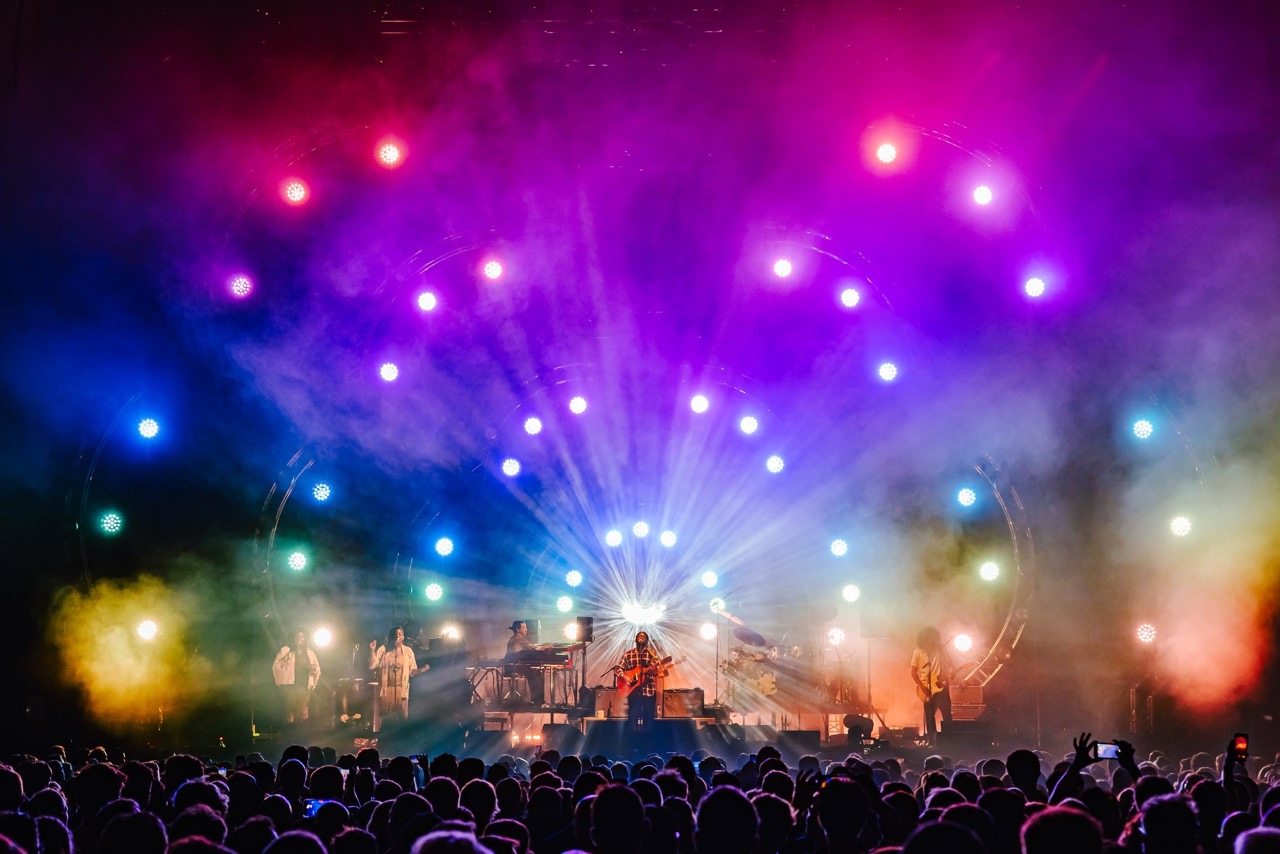
Photo: Luke Dyson
At the end of our interview with this London-born LD, we asked, as we often do, what was the one thing he wanted people to know about him as a designer. “I’m making it all up as I go along,” was his short, snappy answer.
A bit of clever hyperbole? Certainly, given that everyone familiar with his impressive body of work knows how much attention Ed Warren pays to detail, be it his timing of strobes, or his thoughtful choice of light angles and intensity levels. But underlying this meticulous approach is an irrepressible sense of spontaneity that runs through his lighting and production designs, giving them a naturalness that instantly engages audiences in the moment and connects them to the performance on stage.
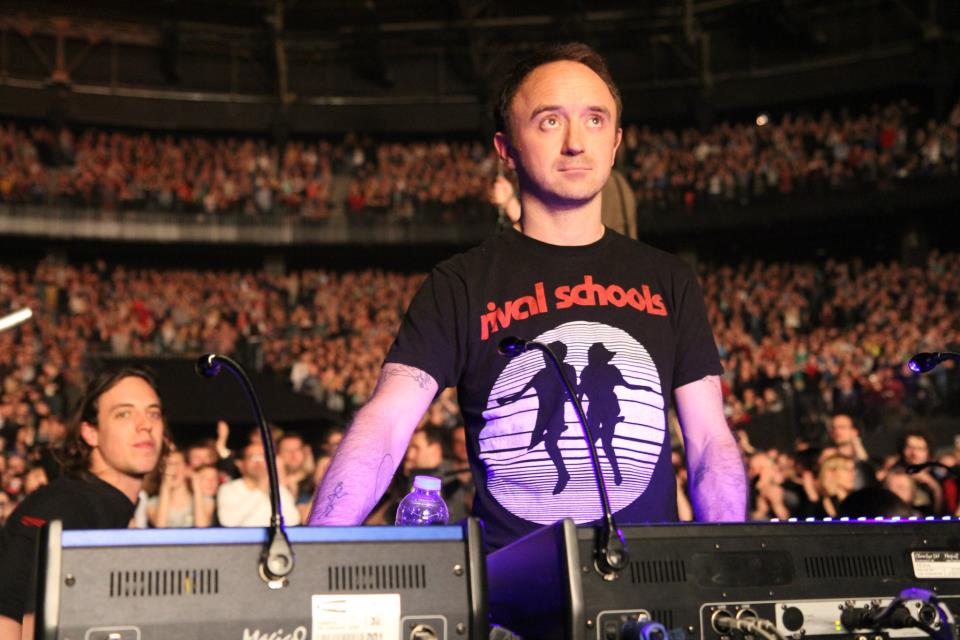
Warren came to lighting design through music, and musicality inspires his free flowing work for a wide range of clients like IDLES, Mumford & Sons, Interpol, Daniel Avery and Four Tet. Always careful to avoid overusing any one technique, or crowding the stage with too many colors, this former TPi Lighting Designer of the Year, strives for simplicity. What better way is there, he reasons, to allow lighting and music to move harmoniously together?
Taking time from his busy schedule, Warren spoke to us from his Manchester-based Next Level Lights about the power of spontaneous light.
When speaking of your client, IDLES, recently, you said that they “take strobing quite seriously.” Why do you think that is? What do think strobing adds to their shows?
“It adds to the theatre of their performance. They are immense fun to watch perform, Bowen the guitarist is a performance artist in his own right. A flash of blinding light followed by a moment of complete darkness gives a kind of old time zoetrope effect. With IDLES every flash the stage is a different composition of body parts flailing. Of course, every band is different, and strobing may be right, or not right for different ones, or right to different degrees.”
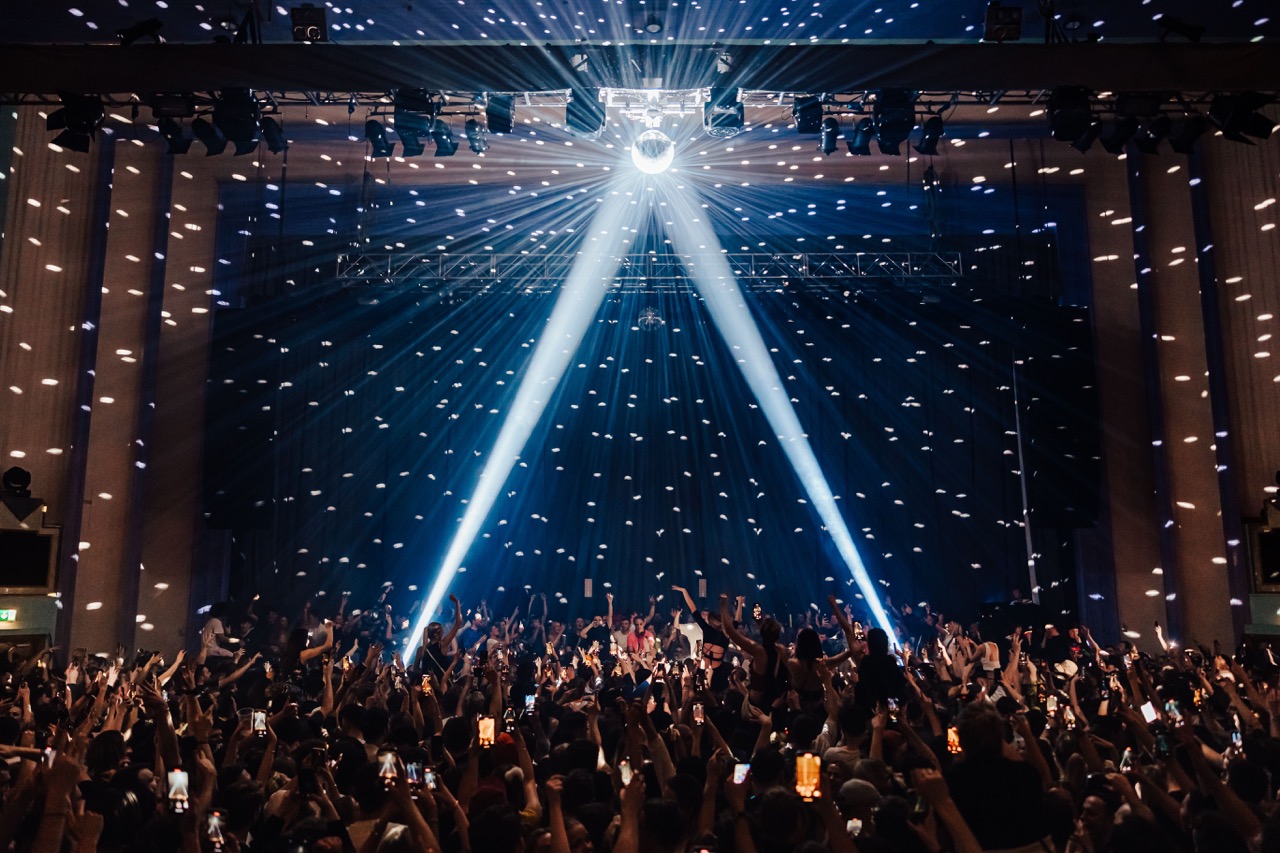
Photo: Luke Dyson
So, how do you determine how much strobing is enough and how much is too much?
“You have to put yourself in the position of the audience. Why have they come to this show? Which songs do they want to lose their minds to? How many songs need that extra lift of light? What kind of story is the artist trying to tell song by song, show by show. What percentage of that show do you need to sit on your hands and just let the musicianship tell the story?”
We’ve always been impressed by how you keep strobing interesting. Any advice on how to do that?
“Try and match the important accents as much as possible. Snare hits, drum rolls, guitar stabs. Not everyone wants a direct blast to the cornea the entire show. Go from different angles. Mess with people’s heads by using a bright flash to completely change the look of the stage in one hit.”
One more question about strobing: yours has always been very in sync with the music. Do you have a musical background?
“Hahaha, yeah like a lot of roadies I was once an aspiring musician. Just mucking about in my bedroom for a few years making stuff up on my own. A track of mine was actually used on ‘Celebrity Masterchef Norway’ for quite a few years. It’s on Spotify if you look hard enough. It definitely helped me fall into the world of lighting by having an understanding and deep enjoyment of music at the very base level. I put it all down to my dad who was an absolute obsessive.”
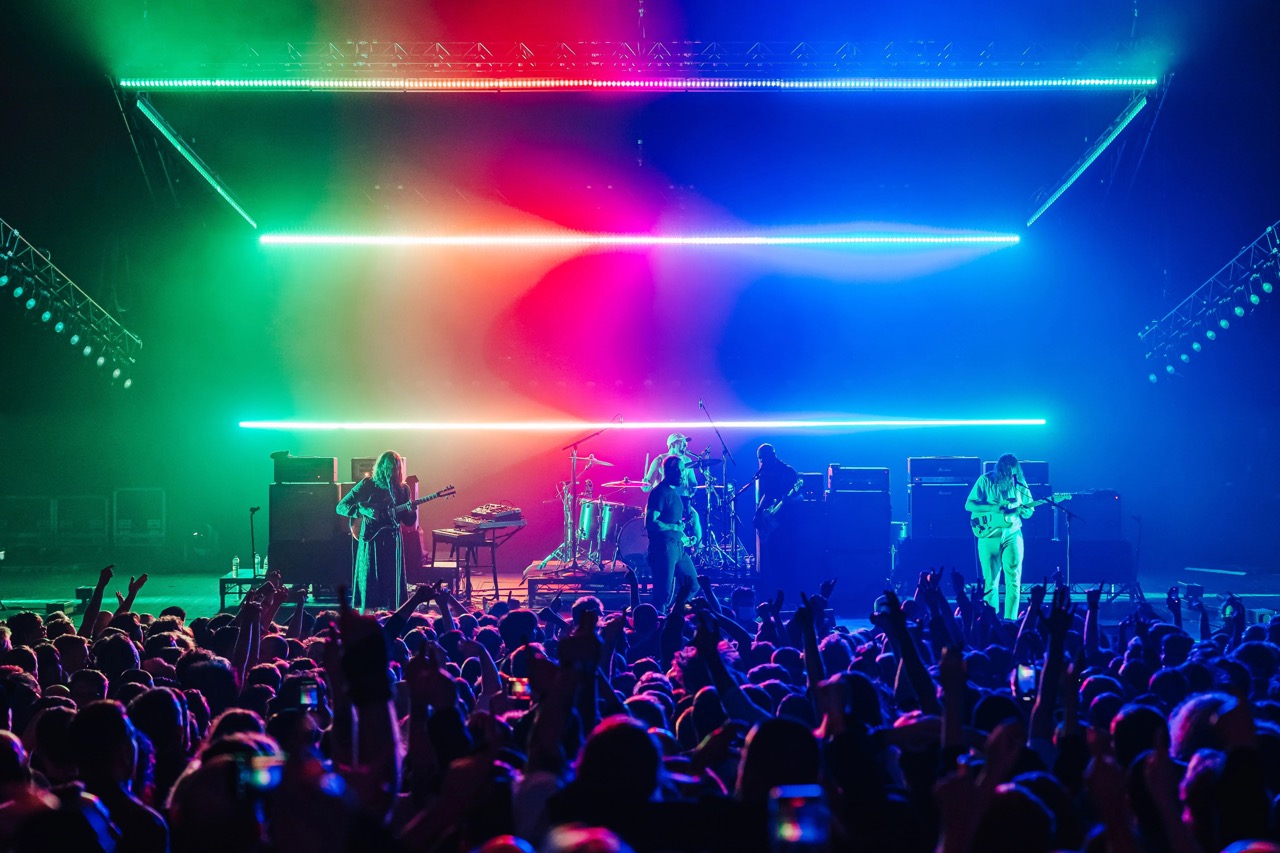
Photo: Luke Dyson
How essential is musicality to being a good lighting designer?
“You can definitely spot the lighting operators who have some kind of musicianship in their bones. It takes an entire level of thought out of what you do and lets you concentrate on art and finesse. This is especially when busking, as it allows you to be one step ahead of a song knowing when a drop or a breakdown are about to hit. I find the best board operators are drummers. I’ve always said a good LD follows the drummer first and foremost and I guess it works when the shoes are on the other feet too.”
Do you have to like a client’s music to do a good job lighting it?
“Interesting question! It certainly helps, yes. I’ve been fortunate enough over 20 years to have worked with a majority of artists I’m a fan of or become a fan of. On the odd occasion I’ve worked with someone who’s music I don’t ‘get’ it’s been difficult to commit fully to the whole process. Anyone can design a light show using software etc., but to be truly complementary to the artist I think your ears and your heart need to be fully invested to be fully sensitive to the needs of the music; otherwise, it can become painting by numbers.”
Do you ever procrastinate at the start of a project?
“Of course! I’m easily distracted, be it my kids, be it the internet be it football and so on. I’m not able to or have any interest in locking myself away from the world and forcing things to happen. I find I design better in short bursts, be it on the train, on a plane, out for a walk or for a few hours in the evening. It’s important for anyone to find their own way of working that they’re comfortable with without feeling like anything is forced. “
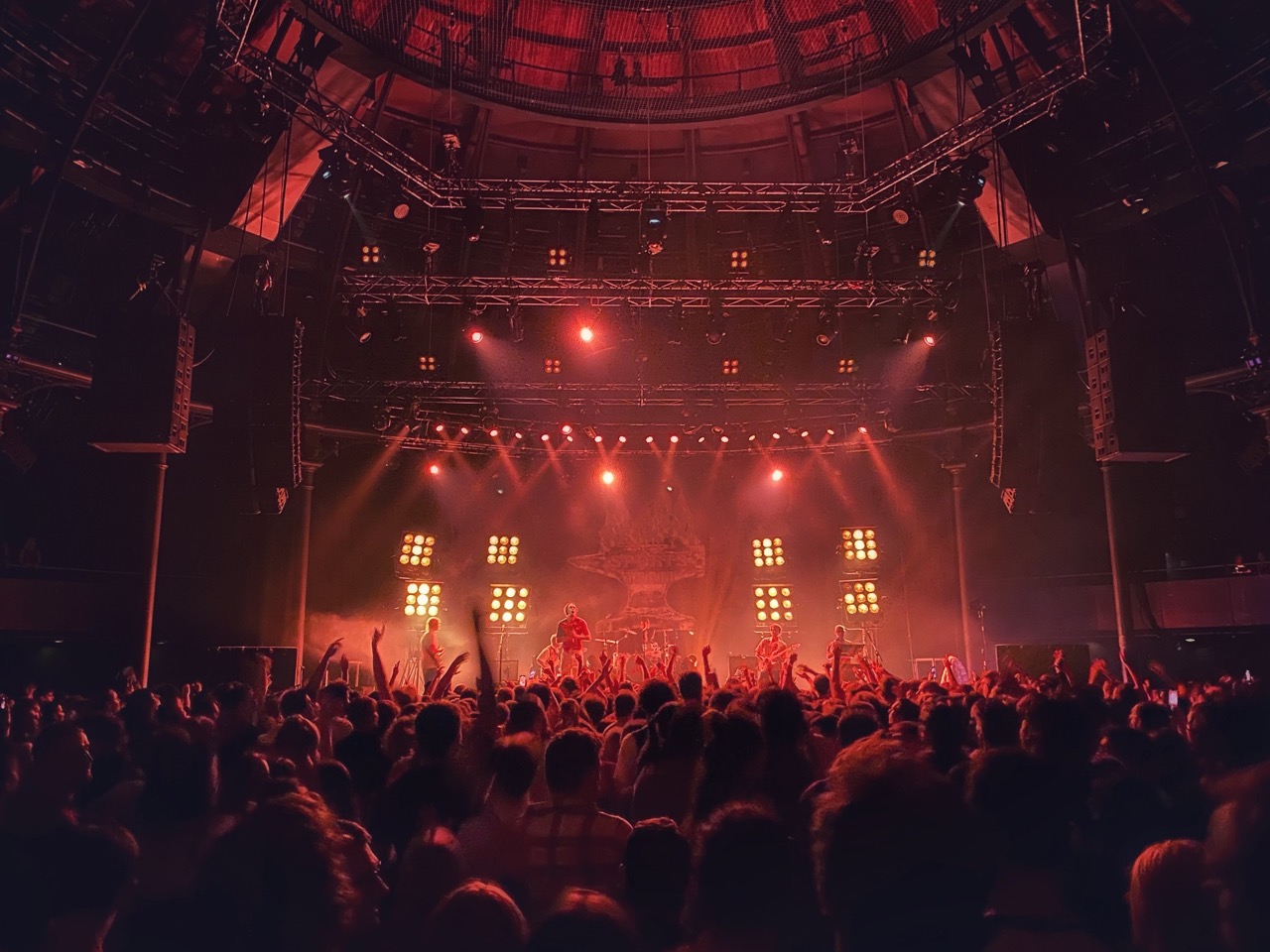
Photo: Luke Dyson
Sometimes (we’re thinking particularly of your work for Daniel Avery), you’ve used a field of light by itself, rather than a video wall or any actual set pieces, to create a very engaging “backdrop” behind the band. Can you tell us a bit about why you do this?
“For a start a lot of the artists I work with either can’t afford a giant video wall or just don’t have the time or the desire to go there! I thrive off being restricted, sometimes enforced by budget/practical reasons, most of the time by myself. I like to use different methods to fill or create a void. Mirror balls, walls of light, blankets of color. When it does come to implementing video, I like to use it as another extension of the production itself rather than a video element slapped on top of a light show for the sake of it.”
You also tend to use a lot of different, sometimes very novel, geometric shapes in your backgrounds. What is your thinking there?
“Simple, clean effects are pleasing to the eye and complement the production rather than distracting from it. I’m also a geometry nerd.”
In most of your designs, you limit yourself to no more than a few colors at a time. Why is that?
“Again, I like to keep things pleasing to the eye and keep the audience focused on the performance, rather than divert people’s minds towards something jumbled and confusing. We’re creating a canvas for the artists on stage to express themselves through, not the other way around.”
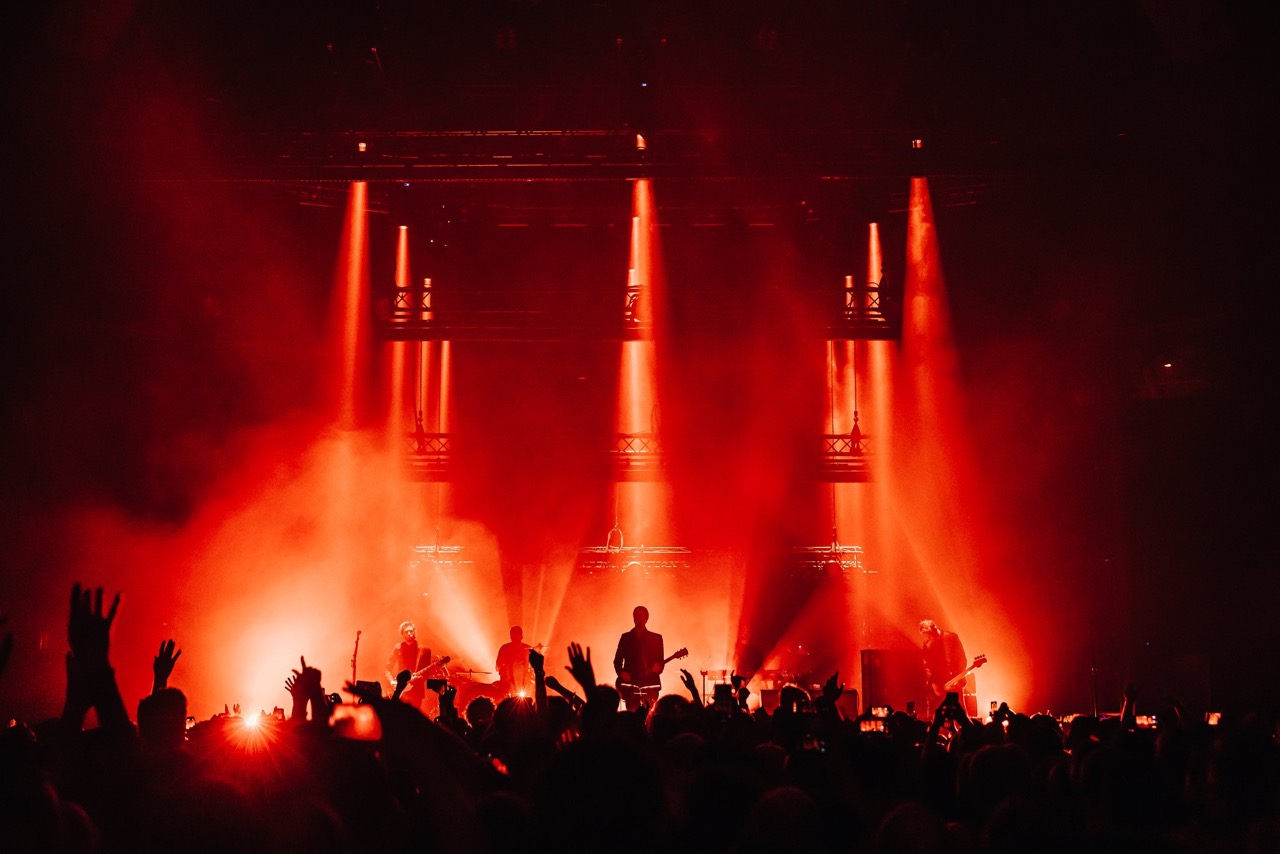
Photo: Luke Dyson
What do you think you would have done if you didn’t become a lighting designer?
“I studied a degree in journalism at university and had a bit of work published in the US and UK at various publications. Maybe I’d have pursued that avenue. Maybe I’d been in your position now asking lighting designers questions and wishing I’d had that job instead as it sounds quite cool! Or pizza delivery. I did that for a few years and can honestly say it was my favorite non-lighting job ever. Bombing around town on a motorbike getting shot at by kids with pellet guns.”
Without mentioning brand names, is there any type of fixture that you feel under-used in concert design? Are there any that are over used or abused?
“I don’t think any fixture can be over or underused. It’s fun looking out for other shows and seeing how a relatively small pool of fixture variants are applied differently. Obviously I’m addicted to mirror balls and try to use them in a different way every time but eventually I’ll have to change the record. It would be good to see big enormo-shows going in the opposite direction and simplifying their setup a bit. It’s getting a little out of hand.”
In the Mumford and Sons Delta of the US, you had a 360ﹾ stage that was rectangular, rather than round. Were there any special challenges with that?
“Many! You’d need to write an entire new article about that one I’m afraid! Despite the various challenges that is still one of the shows I am most proud of.”
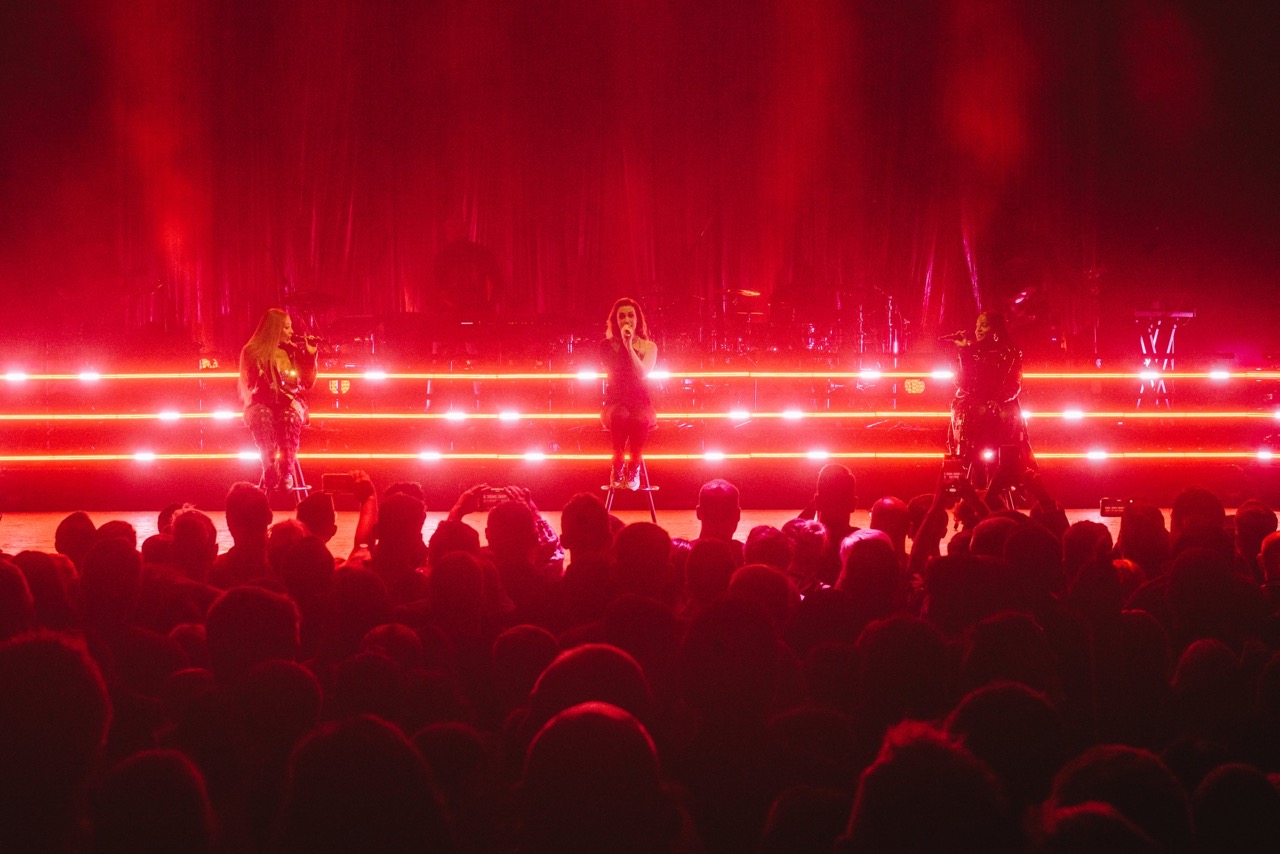
Photo: Luke Dyson
Ok, we’ll write about that one day, as you had some very impressive big looks in that show. Sometime after that show you lit Mumford and Sons on the Late Late Show. How do you scale down a concert design for TV so it still has the same feel?
“I pick the unique elements of the production which are suited to the song being performed and see how much we can get away with squeezing onto the given stage without restricting the performance area or the production/technical values of the TV show itself. Lighting for television is very different to lighting for concert, you have to be conscious of the camera’s needs.”
You’ve also lit commercials for an impressive list of clients. How does that compare to concert lighting?
“I find people who don’t work every day in live music are a lot easier to impress! Throw a few moving lights into a dark studio for a day, switch them on and their minds are blown before you’ve done anything. It tends to be a lot more frenetic and challenging as you have less time to get the required results but fun and rewarding all the same.”
On the recent Sugababes tour, and many of your other projects, you use silhouettes in a variety of different ways. What are your thoughts on silhouetting? How do you keep it interesting? Can you over-use it?
“I find it’s akin to strobing, as in you can use it throughout the show at the right moments, but over use or misuse can lead to distraction. Using Sugababes as an example, people come to their shows to SEE them and connect with them as people. If you backlight them for the majority of the show like you would a goth or punk band for example, the ticket paying public would be raging. So, save that kind of impact for the correct moments. The choreography of a show, picking the right moments for effects be it pop, punk, rock, DJ is just as important to get right as any other.”
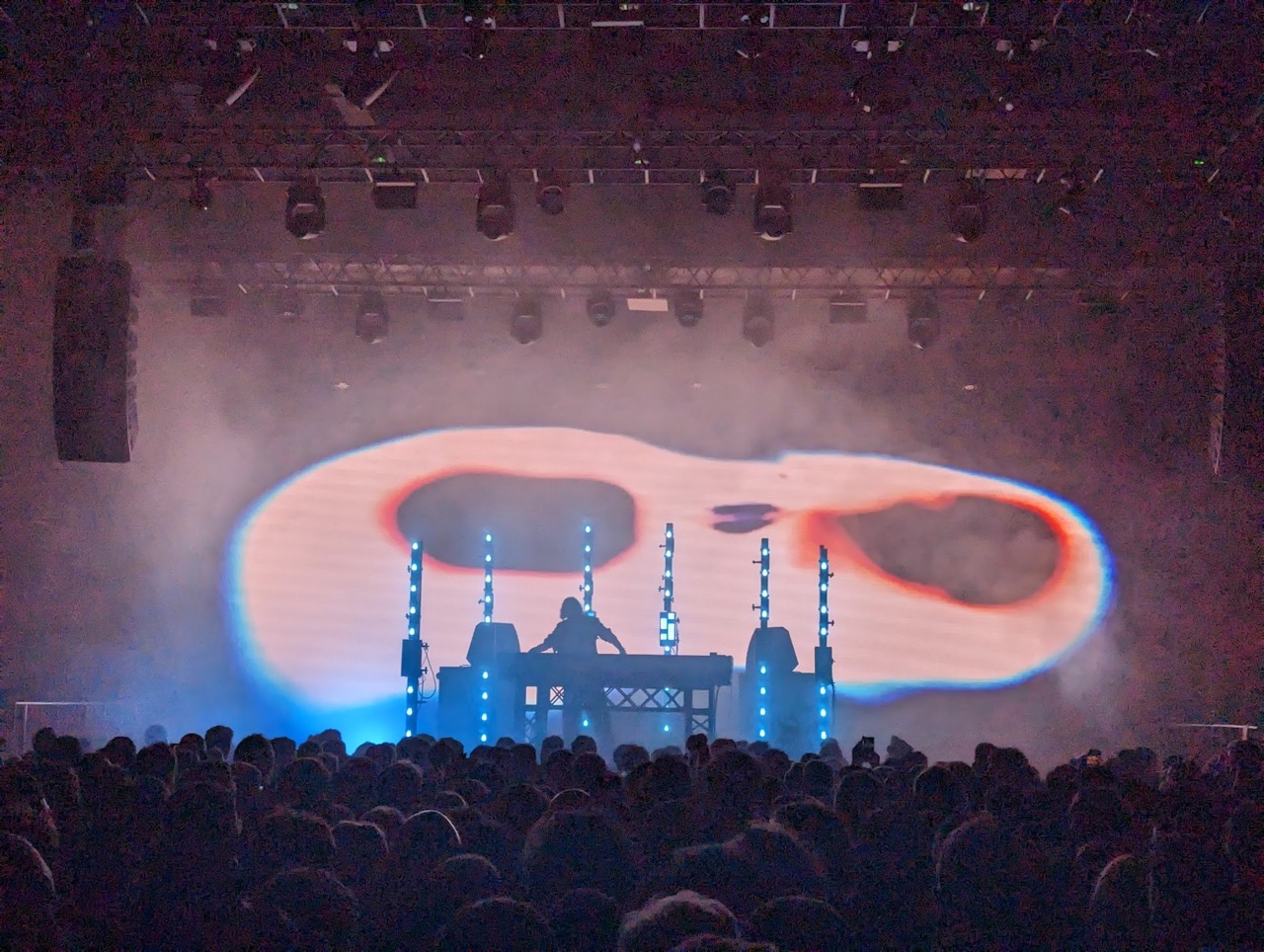
Photo: Luke Dyson
You’ve lit many major artists. Looking back to the past, is there one who is no longer with us, that you wish you could have gotten the opportunity to light?
“I’m not the kind of person to look back and wish ‘what if’, but just to spend an hour in the presence of Bowie’s creative orbit would’ve been fully transcendent. He did walk past me once and I felt his aura like a magnet, I was terrified. I was hanging with Tom Kenny last year for a bit and he dropped a few tidbits about working with David over the last 20 years of his life and I lapped every word of it up like an excitable puppy!”
What is the one thing you would like people to know about you as a lighting designer?
“I’m making it all up as I go along!
To Learn More About Ed Warren Visit Instagram : @edforeverWebsite: www.nextlevellights.com